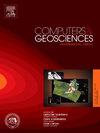An innovative adaptive mineral segmentation method via augmentation and fusion of single and orthogonal polarized images: AMS-p/xpl
IF 4.4
2区 地球科学
Q1 COMPUTER SCIENCE, INTERDISCIPLINARY APPLICATIONS
引用次数: 0
Abstract
An adaptive mineral segmentation method is proposed to address the challenges of traditional thin section identification, which is typically expert-dependent, highly subjective, and time-consuming. The method is based on the augmentation and fusion of single polarized (PPL) and orthogonal polarized (XPL) images using an enhanced Deeplabv3-based segmentation model. The Depth Separable Convolution (DSC) is introduced to strengthen edge and texture features from PPL images, and a ColorBoost module is designed to enhance color information from XPL images. An adaptive feature fusion mechanism is employed to integrate complementary polarized features and dynamically adjust their contribution weights. The results demonstrate that the proposed model achieved the highest segmentation performance on the test set, with a mean intersection over union (mIoU) of 89.0 % and an accuracy of 96.7 %. Compared to widely used semantic segmentation networks such as FCN, it demonstrates a notable improvement in mIoU, with a maximum gain of 32.9 %. Additionally, through the integration of feature augmentation and an adaptive fusion mechanism, the model outperforms the baseline DeepLabv3 by 5 % in mIoU. The proposed method provides a more efficient and automated solution for thin section mineral identification, reducing reliance on expert knowledge and improving applicability in practical and non-specialist settings.
基于单偏振和正交偏振图像增强和融合的自适应矿物分割方法:AMS-p/xpl
针对传统薄片识别方法中专家依赖性强、主观性强、耗时长等问题,提出了一种自适应矿物分割方法。该方法基于基于增强的deeplabv3分割模型对单极化(PPL)和正交极化(XPL)图像进行增强和融合。引入深度可分离卷积(DSC)增强PPL图像的边缘和纹理特征,设计ColorBoost模块增强XPL图像的颜色信息。采用自适应特征融合机制对互补极化特征进行融合,并动态调整互补极化特征的权重。结果表明,该模型在测试集上获得了最高的分割性能,平均相交比(mIoU)为89.0%,准确率为96.7%。与FCN等广泛使用的语义分割网络相比,它在mIoU方面有了显著的改进,最大增益为32.9%。此外,通过集成特征增强和自适应融合机制,该模型的mIoU比基线DeepLabv3高出5%。该方法为薄层矿物识别提供了一种更有效和自动化的解决方案,减少了对专家知识的依赖,提高了在实际和非专业环境中的适用性。
本文章由计算机程序翻译,如有差异,请以英文原文为准。
求助全文
约1分钟内获得全文
求助全文
来源期刊

Computers & Geosciences
地学-地球科学综合
CiteScore
9.30
自引率
6.80%
发文量
164
审稿时长
3.4 months
期刊介绍:
Computers & Geosciences publishes high impact, original research at the interface between Computer Sciences and Geosciences. Publications should apply modern computer science paradigms, whether computational or informatics-based, to address problems in the geosciences.
 求助内容:
求助内容: 应助结果提醒方式:
应助结果提醒方式:


